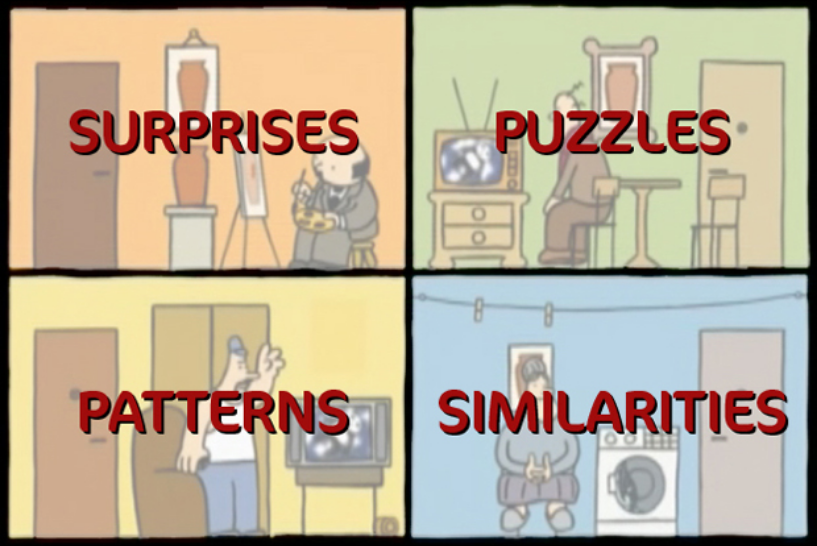Carrying out a grid analysis on a short film is one of the best ways to engage your class and make them think more deeply about the structure and themes of the film they have just watched. It works best as a group activity.
This technique was developed by the British Film Institute from Aiden Chambers’ ‘Tell Me’ questions for use with English texts. It is useful in encouraging open participation, discussion and creative thinking.
Grid analyses are easy to do and don’t need special knowledge from the person holding the chalk. The board becomes the focus of the activity and the person holding the chalk is merely the mediator. There are no right or wrong answers, only suggestions supported by observation. (If a pupil says that a film reminds them of spaghetti, don’t be fazed, simply ask them why. They will usually provide a good reason like commenting on the tangled ambitions of the characters or the confusion of a comic chase sequence.) As long as an opinion can be supported, it is a valid contribution.
Once you have carried out this work, the class will be in a much better position to discuss meanings and themes in the film and to carry out follow-up activities.
How to do it
To carry out the grid analysis either print out the ‘Tell Me’ Grid Analysis worksheet or draw a cross on the board and name the four quadrants as follows:

Before showing or reviewing the short film you should explain clearly what is meant by each heading.
Surprises
What happens that you were not expecting? These are the main surprises in the film which should be noted down in the order that they come.
Puzzles
What questions remain unanswered by the end of the story? These may be things that remain genuinely unanswered, such as what happened to a secondary character or what they did with the money; but it may also refer to elements of the story (e.g. character motivation, backstory or theme) that students did not understand.
Sometimes a pupil may suggest a puzzle during the ‘Surprises’ part of the analysis. Note it down under ‘Puzzles’ and explain the difference.
Patterns
What patterns can you see recurring in the film? These could be patterns of recurring actions, situations, camera shots or movements, compositions, narrative devices, design elements, colours, sounds, lighting, settings, characters, use of music (which may be themed to the plot, setting or individual character), use of specific words…
You will quickly discover that the patterns often intensify and reveal the themes of the text, thereby helping to answer some of the questions raised in the ‘Puzzles’ quadrant.
Similarities
What other texts does the film remind you of? This can be in terms of genre, tone, character, story world, storyline, plot, themes, narrative techniques, particular events or outcomes, or any other detail that the pupil finds interesting. Similarities may refer to the complete narrative or a specific element from the text. (For example, while the plot from ‘Billy Elliot’ is like ‘Rocky’ in ballet shoes, the character of Billy is like the lead character from ‘Empire of the Sun’, and the miners’ strike sequence might be compared to a G7 protest.)
Next Steps
Watch our Grid Analysis video tutorial.
Use the ‘Tell Me’ grids in conjunction with focused questions around the three Cs and Ss to generate a deep discussion of a film’s story, subject and film technique. You can find The Cs and Ss worksheet in our resources.
